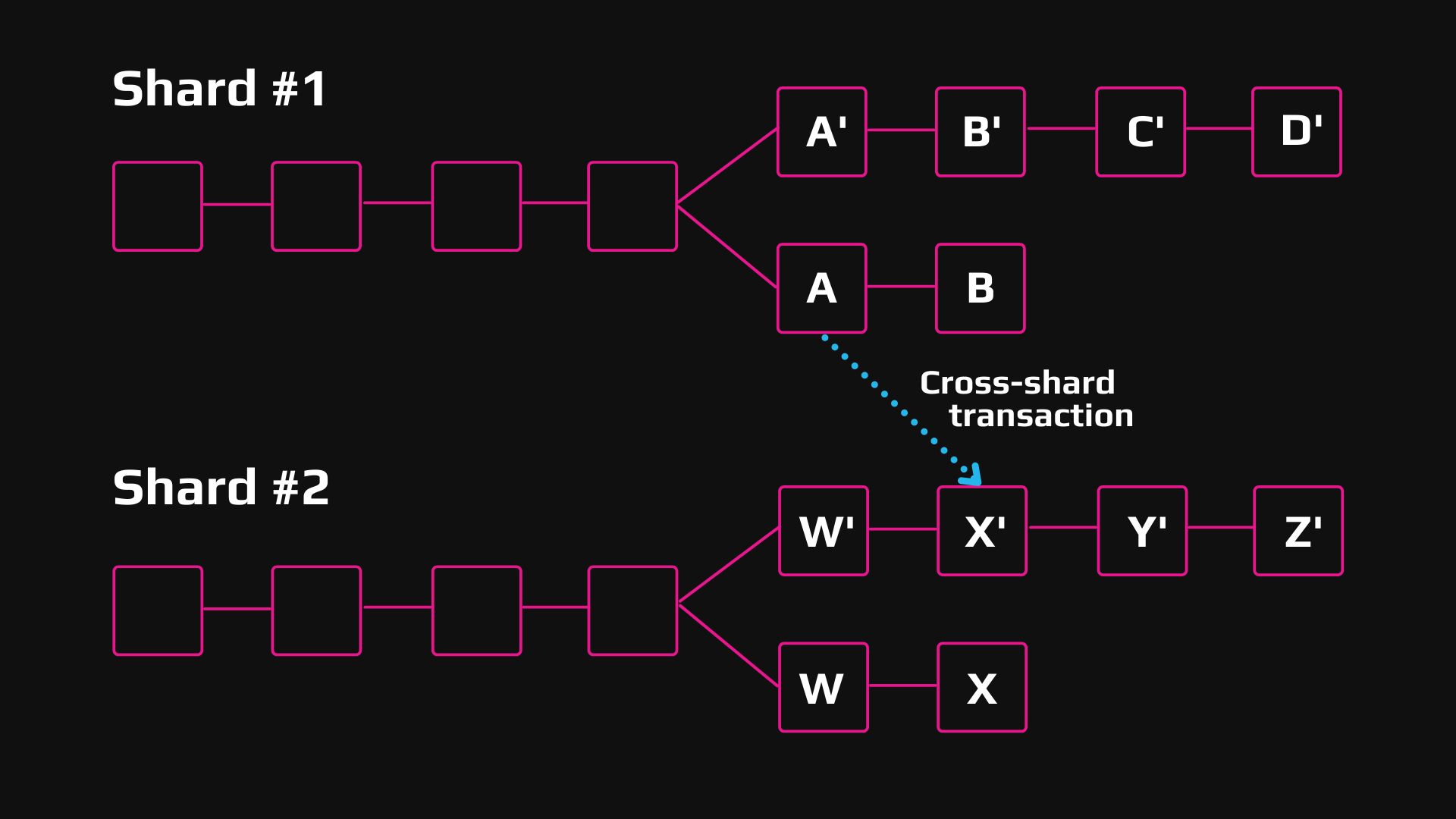Introduction
Welcome to the world of blockchain, where decentralization and security are paramount. Blockchain technology has revolutionized various industries by offering transparency, immutability, and trust. However, as blockchain networks grow and handle an ever-increasing volume of transactions, scalability issues arise.
This is where sharding comes into play. Sharding is a technique that aims to improve the scalability of blockchain networks while maintaining their security and decentralization. It is a partitioning mechanism that allows for parallel processing of transactions, enabling blockchain networks to scale horizontally.
In this article, we will explore the concept of sharding in blockchain, how it works, the benefits it offers, and the challenges associated with its implementation. We will also delve into some real-world use cases that highlight the effectiveness of sharding in improving blockchain scalability.
So, let’s dive into the world of sharding and discover how this innovative technique is shaping the future of blockchain technology.
What is Sharding?
Sharding is a technique used in blockchain technology to improve scalability by horizontally partitioning the network. It involves breaking down the entire blockchain network into smaller, more manageable parts called shards. Each shard operates independently and is responsible for processing a subset of the network’s transactions.
Traditionally, in a non-sharded blockchain network, all nodes participate in validating every transaction, resulting in a significant computational overhead. As the network grows, this process becomes slower, limiting the network’s capacity to handle a large number of transactions.
With sharding, the blockchain network is divided into multiple shards, and each shard consists of a subset of nodes. Each shard maintains its own database and validates only the transactions occurring within that shard. This partitioning allows for concurrent processing of transactions, enabling the network to handle a higher transaction throughput.
To ensure the security and integrity of the network, sharding employs two key strategies: shard selection and cross-shard communication. Shard selection involves assigning nodes to shards based on certain criteria, such as load balancing and transaction history. Cross-shard communication allows for inter-shard transactions, ensuring the ability to transfer assets or value between shards.
It is important to note that while shards operate independently, they still rely on the network as a whole for achieving consensus. Each shard’s state is periodically synchronized with the rest of the network to maintain a consistent blockchain across all shards.
By implementing sharding, blockchain networks can achieve significant scalability improvements. The ability to process transactions in parallel across multiple shards results in a higher transaction throughput, reducing network congestion and enhancing overall performance.
In the next section, we will explore how sharding works in more detail to gain a deeper understanding of this technique’s inner workings.
How Does Sharding Work?
Sharding works by splitting a blockchain network into smaller, independent parts called shards. Each shard is responsible for storing and processing a subset of the network’s transactions, which allows for parallel transaction processing and improved scalability.
When implementing sharding, one important aspect is shard selection. There are different approaches to shard selection, including random shard assignment, load balancing, and historical transaction-based assignment. The goal is to distribute the network’s load evenly among the shards, ensuring efficient processing of transactions.
Once the shards are established, each shard operates independently and maintains its own copy of the blockchain and transaction history. This decentralization of data storage reduces the amount of information each node needs to store and validate, further improving scalability.
When a transaction is initiated, it is assigned to a specific shard based on certain criteria, such as the account address or shard key. The assigned shard then validates and processes the transaction, updating its local copy of the blockchain. This local update is periodically synchronized with the rest of the network to maintain consistency.
While most transactions can be processed entirely within a single shard, there are situations where transactions require interaction between different shards. This is known as cross-shard communication. To facilitate cross-shard transactions, a protocol is established to enable inter-shard communication and transfer of assets.
When a cross-shard transaction occurs, the initiating shard locks the assets involved in the transaction, ensuring their availability during the process. The initiating shard then communicates with the target shard, initiating the transfer of assets. Once the transaction is completed, the assets are transferred to the target shard, and the initiating shard updates its local copy of the blockchain accordingly.
Implementing sharding in a blockchain network involves careful design and coordination to ensure seamless operation. It requires a consensus mechanism that allows the shards to agree on the state of the network as a whole while maintaining the independence of each shard. Various consensus algorithms, such as Proof of Stake (PoS) or Practical Byzantine Fault Tolerance (PBFT), can be used to achieve this.
In the next section, we will explore the benefits of implementing sharding in blockchain networks, highlighting its potential impact on scalability and performance.
Benefits of Sharding in Blockchain
Sharding offers several key benefits to blockchain networks, addressing the scalability challenges that can hinder their growth and mainstream adoption. Let’s explore some of the prominent advantages of implementing sharding:
- Increased Scalability: Sharding allows blockchain networks to process transactions in parallel across multiple shards. This significantly increases the network’s overall transaction throughput, enabling it to handle a much larger volume of transactions compared to traditional non-sharded networks.
- Improved Performance: With parallel transaction processing, sharding reduces transaction confirmation times and network congestion. This results in faster transaction finality and an overall better user experience.
- Enhanced Network Efficiency: By splitting the blockchain network into smaller shards, sharding reduces the computational burden on individual nodes. Nodes only need to validate and process transactions occurring within their assigned shard, resulting in more efficient resource utilization.
- Reduced Storage Requirements: Sharding allows for the distribution of data across multiple shards, reducing the amount of data each node needs to store and sync. This helps mitigate the storage limitations that can hinder the growth of blockchain networks.
- Cost-Effectiveness: With improved scalability and efficiency, sharding can potentially lower transaction fees by reducing the demand for computational resources. This makes blockchain networks more accessible and affordable, particularly for high-volume use cases.
- Increased Network Resilience: Sharding enhances the fault tolerance of blockchain networks. If one shard experiences performance issues or becomes unavailable, other shards can continue to operate normally. This makes the network more resilient and less prone to single points of failure.
These benefits highlight the immense potential of sharding in addressing the scalability limitations of blockchain networks. By enabling faster, more scalable, and efficient transaction processing, sharding opens up new possibilities for implementing blockchain technology in various industries.
In the next section, we will discuss the challenges associated with implementing sharding and how these hurdles can be overcome.
Challenges of Implementing Sharding
While sharding offers significant benefits for scalability in blockchain networks, it also comes with its own set of challenges that need to be addressed. Let’s explore some of the key challenges associated with implementing sharding:
- Consensus and Security: Achieving consensus and maintaining security in a sharded blockchain network can be challenging. Designing an effective consensus mechanism that allows shards to agree on the overall state of the network while preserving the security and decentralization is a complex task.
- Cross-Shard Communication: Enabling efficient cross-shard communication is crucial for seamless transaction processing. The design and implementation of protocols that facilitate inter-shard communication, asset transfers, and synchronization can be technically challenging.
- Data Distribution: Dividing the network’s data across multiple shards requires careful consideration. Determining shard boundaries, distributing, and balancing the data across shards to ensure optimal performance and efficient storage utilization can be a complicated process.
- Migration and Shard Management: Implementing sharding in an existing blockchain network or managing the addition and removal of shards can be challenging. Ensuring a smooth transition from a non-sharded network to a sharded one and managing shard expansion or consolidation requires careful planning and coordination.
- Complexity and Development Effort: Sharding adds complexity to the design and development of blockchain networks. Implementing and maintaining sharding mechanisms may require additional development effort, expertise, and thorough testing to ensure the system’s proper functioning and security.
- Network Synchronization: Keeping the state of the overall network synchronized across all shards is crucial for maintaining the integrity of the blockchain. Ensuring timely and accurate synchronization of transactions and data across shards can be technically challenging and resource-intensive.
Overcoming these challenges requires ongoing research, innovation, and collaboration within the blockchain community. Various projects and research initiatives are actively exploring solutions to address these obstacles, such as improved consensus algorithms, more efficient cross-shard communication protocols, and better shard management techniques.
While the challenges are significant, the potential benefits of sharding make it an exciting avenue for driving the scalability and adoption of blockchain technology.
Next, let’s explore some real-world use cases where sharding has been successfully implemented in blockchain networks.
Use Cases of Sharding in Blockchain
Sharding has immense potential to revolutionize blockchain technology and enable its application in various industries. Let’s explore some real-world use cases where sharding has been successfully implemented:
- Decentralized Finance (DeFi): Sharding can greatly benefit the rapidly growing DeFi sector. By enabling higher transaction throughput and lower fees, sharded blockchain networks can support decentralized exchanges, lending platforms, and other financial applications at scale, offering users a seamless and cost-effective experience.
- Digital Identity: Sharding can play a vital role in building scalable and privacy-preserving digital identity systems. By partitioning identity data across multiple shards, blockchain networks can efficiently handle authentication, verification, and access management, ensuring secure and efficient identity management solutions.
- Supply Chain Management: Sharding can enhance supply chain management by enabling efficient tracking and verification of goods. Each shard can handle specific stages of the supply chain, such as manufacturing, quality control, logistics, and retail, allowing for faster and more transparent supply chain operations.
- Gaming and Non-Fungible Tokens (NFTs): Sharding can address scalability limitations in blockchain-based gaming and NFT platforms. Sharding enables seamless transaction processing, facilitating high-speed gameplay, and allowing for the creation and trading of unique in-game items, collectibles, and digital assets.
- Healthcare: Sharding can revolutionize healthcare information management by providing secure and scalable storage of patient records, medical research data, and clinical trial information. Sharded blockchain networks can enable interoperability, data sharing, and privacy preservation across healthcare organizations, improving patient care and medical research.
- Internet of Things (IoT): Sharding can address the scalability challenges of IoT networks by enabling efficient storage and processing of IoT data. Sharded blockchain networks can securely handle vast amounts of IoT data, ensuring reliable and transparent management of devices, data integrity, and automated transactions between IoT devices.
These use cases demonstrate the wide-ranging applications of sharding in different industries, addressing their specific scalability requirements and enabling the adoption of blockchain technology at scale.
Now that we have explored the benefits, challenges, and use cases of sharding in blockchain, let’s conclude with a summary of the key insights gained from this article.
Conclusion
Sharding is a groundbreaking technique that addresses the scalability limitations of blockchain networks, paving the way for wider adoption and real-world application of decentralized technologies. By partitioning the network into smaller, independent shards, sharding enables parallel processing of transactions, resulting in increased scalability, improved performance, and enhanced network efficiency.
In this article, we explored the concept of sharding in blockchain, understanding its working principles, benefits, challenges, and real-world use cases. Sharding offers significant advantages, such as increased scalability, improved performance, reduced storage requirements, and enhanced network resilience.
However, implementing sharding is not without its challenges. Overcoming obstacles related to consensus and security, cross-shard communication, data distribution, migration, complexity, and network synchronization requires ongoing research and collaboration within the blockchain community.
Nevertheless, sharding presents exciting opportunities in various industries. From decentralized finance and digital identity to supply chain management, gaming, healthcare, and IoT, sharding enables scalable and efficient blockchain solutions that can revolutionize these sectors.
As the blockchain ecosystem continues to evolve, addressing scalability issues through techniques like sharding becomes imperative. Through innovative solutions and the collective efforts of developers, researchers, and industry stakeholders, sharding has the potential to unlock the full potential of blockchain technology, driving its mainstream adoption and transforming the way we transact, collaborate, and build trust in the digital world.
So, let’s embrace the power of sharding and shape a future where blockchain networks can scale effortlessly, empowering individuals, organizations, and industries with secure, scalable, and decentralized solutions.

























